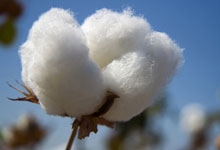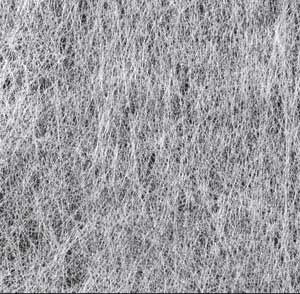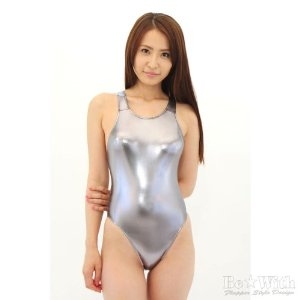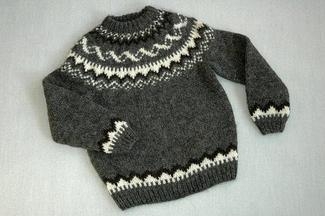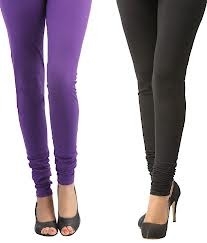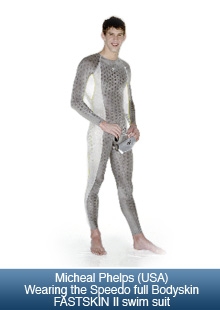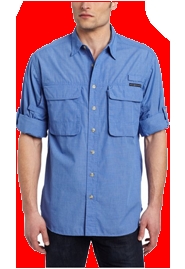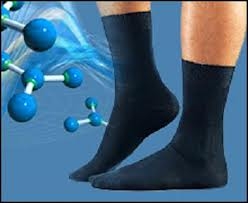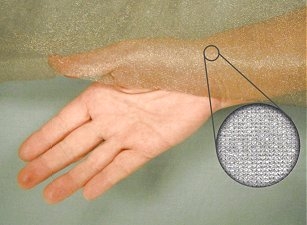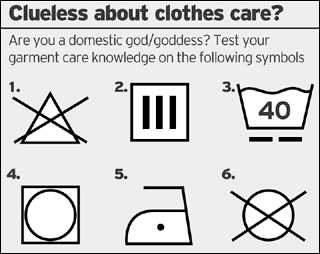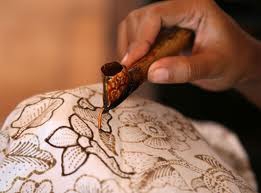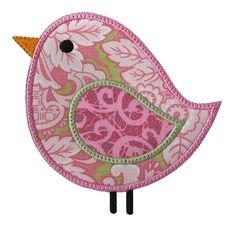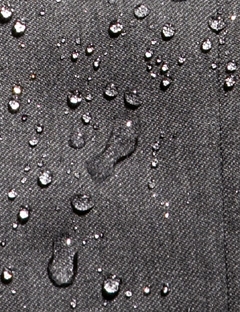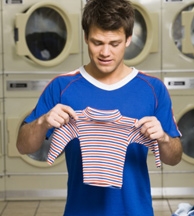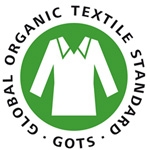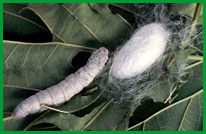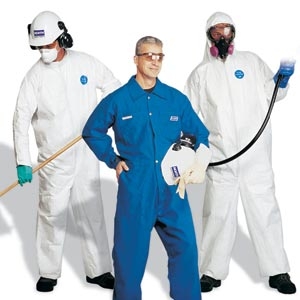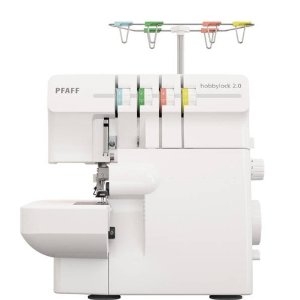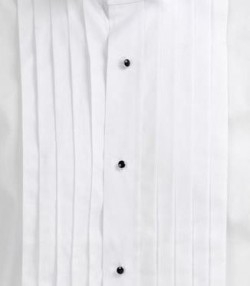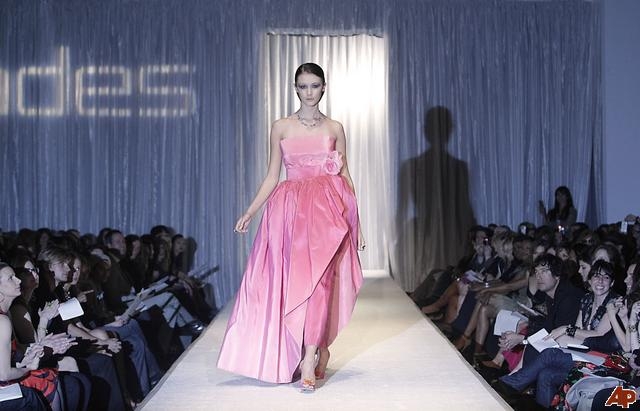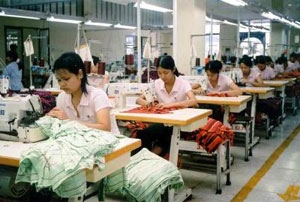GCSE: Trivia Quiz On Textile Technology! Test
(9).jpg)
What do you know about textile technology? Do you think you know as much as necessary to pass this quiz? Textile technology is a division of engineering in which principles and scientific techniques are utilized for manufacturing and development in many ways. It also pertains to the study of chemical and physical principles that analyze the behavior of polymers, the formation of textiles and what it entails. Take this quiz and learn more about textile technology.
- 1.
Natural fibers come from oil or coal.
- A.
True
- B.
False
Correct Answer
B. FalseExplanation
Synthetic fibers come from oil or coal, natural fibers come from plants or animals.Rate this question:
-
- 2.
Knitted and woven fabrics are held together by bonding or felting.
- A.
True
- B.
False
Correct Answer
B. FalseExplanation
Non-wovens are bonded or felted together.Rate this question:
-
- 3.
Knitted fabrics can only be made into jumpers.
- A.
True
- B.
False
Correct Answer
B. FalseExplanation
Knitted fabrics are made by interlocking loops. Tee shirts, sock, underwear, swimwear can be all made from very fine knitted fabric.Rate this question:
-
- 4.
Weft knitted fabrics
- A.
These fabric stretch and loose their shape easily
- B.
It has a diagonal pattern
- C.
This fabric does not stretch
- D.
Can be used for jumpers, socks and tee shirts
Correct Answer(s)
A. These fabric stretch and loose their shape easily
D. Can be used for jumpers, socks and tee shirtsExplanation
Weft knitted fabrics are known for their stretchability and tendency to lose their shape easily. This makes them suitable for garments like jumpers, socks, and tee shirts, where a certain level of stretch and comfort is desired. The diagonal pattern mentioned in the question is not a characteristic of weft knitted fabrics, so it is not relevant to the explanation.Rate this question:
-
- 5.
If yarns run straight they are W________________. If the yarns loop around each other in a repeated way, it's k________. If there are just fibres, it's n___-_______.
Correct Answer(s)
Woven
Knitted
non-wovenExplanation
The correct answer choices are woven, knitted, and non-woven. These terms describe different methods of fabric construction. Woven fabrics are made by interlacing two sets of yarns at right angles to each other, creating a stable and structured fabric. Knitted fabrics are made by interlooping yarns in a repeated pattern, resulting in a flexible and stretchy fabric. Non-woven fabrics are made by bonding or felting fibers together, without the need for weaving or knitting.Rate this question:
- 6.
Why might fabrics be made by combining fibres?
- A.
To make a fabric less desirable.
- B.
To make it more hard-wearing.
- C.
To drape better.
- D.
To make it dry more slowly.
- E.
To add interesting textures.
Correct Answer(s)
B. To make it more hard-wearing.
C. To drape better.
E. To add interesting textures.Explanation
Fabrics are often made by combining fibers to enhance their properties. By combining different types of fibers, such as natural and synthetic fibers, the fabric can become more hard-wearing, making it more resistant to wear and tear. Additionally, combining fibers can improve the fabric's ability to drape, allowing it to hang and flow better when worn. Lastly, combining fibers can add interesting textures to the fabric, creating visual and tactile interest.Rate this question:
-
- 7.
Elastane can be MIXED with cotton to make a stretchy, soft fabric.
- A.
True
- B.
False
Correct Answer
A. TrueExplanation
Elastane, also known as spandex or Lycra, is a synthetic fiber known for its elasticity. It can be blended with cotton to create a fabric that combines the natural softness of cotton with the stretchiness of elastane. This blend is commonly used in clothing items like leggings, jeans, and athletic wear to provide a comfortable and flexible fit. Therefore, the statement that elastane can be mixed with cotton to make a stretchy, soft fabric is true.Rate this question:
-
- 8.
Fastskin is a new fabric technology that mimics the hydro-dynamic skin of an octopus.
- A.
True
- B.
False
Correct Answer
B. FalseExplanation
Fastskin is the trade mark name for a fabric developed by Speedo, which mimics the hydrodynamic properties of shark skin.Rate this question:
-
- 9.
Micro-encapsulation lets manufacturers put c___________s into fabrics.
Correct Answer
camels
conductive fibres
chemicalsExplanation
Tiny droplets of a chemical is coated in a shell, these little droplets are embedded into the fabric. Insect repellent, vitamins, caffeine, odour neutralisers and perfume can be added.Rate this question:
- 10.
Laminated fabrics are made up of layers
- A.
True
- B.
False
Correct Answer
A. TrueExplanation
Lamination is another method of improving fabric's properties. Insulation, strength, for example. Holofoil is a holographic laminate to give dynamic colour change.Rate this question:
-
- 11.
Smart materials can change randomly
- A.
False
- B.
True
Correct Answer
A. FalseExplanation
Smart materials are designed to react automatically to changes in the environment or surroundings. Such as light, water or temperature.Rate this question:
-
- 12.
Nano particles of silver can be used to coat socks to stop them smelling.
- A.
True
- B.
False
Correct Answer
A. TrueExplanation
Nanoparticles are very, very small particles of a substance that can be used to coat a fabric without changing the feel of it. Such as fabric coated so it actually breaks down dirt and stains. self-cleaning fabric.Rate this question:
-
- 13.
Conductive fabrics conduct electricity from a small flexible battery through woven in conductive fibres or comfortable coatings.What could they be used for?
- A.
Sensors in clothes to monitor health, blood pressure, diabetes and heart rate.
- B.
Switches for MP3 players and mobile phones
- C.
Electrical heaters for car seats.
- D.
Electrical heaters for poor circulation
Correct Answer(s)
A. Sensors in clothes to monitor health, blood pressure, diabetes and heart rate.
B. Switches for MP3 players and mobile phones
C. Electrical heaters for car seats.
D. Electrical heaters for poor circulationExplanation
Conductive fabrics can be used for various purposes such as sensors in clothes to monitor health, blood pressure, diabetes, and heart rate. They can also be used as switches for MP3 players and mobile phones. Additionally, conductive fabrics can be used as electrical heaters for car seats and for individuals with poor circulation.Rate this question:
-
- 14.
Fabric products have got to have a care label.
- A.
True
- B.
False
Correct Answer
B. FalseExplanation
Garments have got to have the fibre content by law, usually the label also gives care symbols too.Rate this question:
-
- 15.
There are two sources of dye for fibres and fabrics.They are n____________ and c____________.
Correct Answer
natural and chemicalExplanation
The question asks for the two sources of dye for fibers and fabrics. The correct answer is "natural and chemical." Natural dyes are derived from plants, animals, or minerals, and they are often considered more environmentally friendly. Chemical dyes, on the other hand, are synthetic dyes created through chemical processes. Both natural and chemical dyes are commonly used in the textile industry to add color to fibers and fabrics.Rate this question:
- 16.
Tie dye and batik are both traditional ways of resist dyeing fabric.
- A.
True
- B.
False
Correct Answer
A. TrueExplanation
Both tie dye and batik are indeed traditional methods of resist dyeing fabric. In tie dye, fabric is folded, twisted, or tied in various ways to create patterns, and then dye is applied to the fabric. The tied areas resist the dye, creating unique designs. Similarly, in batik, wax is applied to the fabric in specific areas to create a resist. The fabric is then dyed, and the waxed areas resist the dye, resulting in intricate patterns. Therefore, the statement "Tie dye and batik are both traditional ways of resist dyeing fabric" is true.Rate this question:
-
- 17.
There are several ways to print on fabric they are Bl_____ printing, sc_______ printing, r________ screen printing and i______ printing.
Correct Answer
Block
screen
rotary
inkjetExplanation
Ink jet does not require screens or rollers so can be used for larger non-repeat images, patterns or designs.Rate this question:
- 18.
Which one of these is NOT a decorative technique?
- A.
Buttons
- B.
Applique
- C.
Embroidery
- D.
Beading including the use of sequins
Correct Answer
A. ButtonsExplanation
Buttons are not considered a decorative technique because they are primarily used as functional fasteners rather than for decorative purposes. While buttons can have decorative elements such as unique shapes or designs, their main purpose is to secure garments together. In contrast, techniques like applique, embroidery, and beading with sequins are specifically used to enhance the aesthetic appeal of a fabric or garment.Rate this question:
-
- 19.
Silicone can be applied to the suface of the fabric to make it water resistant.
- A.
True
- B.
False
Correct Answer
A. TrueExplanation
Silicone can be applied to the surface of the fabric to make it water resistant. This means that when silicone is applied to the fabric, it creates a protective layer that repels water, preventing it from seeping into the fabric. This can be beneficial in situations where the fabric needs to be protected from moisture or water damage.Rate this question:
-
- 20.
Some fibres and fabrics are prone to shrinkage and are pre-shrunk.
- A.
True
- B.
False
Correct Answer
A. TrueExplanation
Some fibres and fabrics have a tendency to shrink when washed or exposed to heat. To prevent this shrinkage, these fibres and fabrics are treated in a process called pre-shrinking. During pre-shrinking, the fibres and fabrics are subjected to controlled conditions that cause them to shrink to their maximum extent. This ensures that any further shrinkage is minimized when the fibres and fabrics are used to make garments or other products. Therefore, the statement "Some fibres and fabrics are prone to shrinkage and are pre-shrunk" is true.Rate this question:
-
- 21.
Which one(s) is not a fastener.
- A.
Zip
- B.
Button
- C.
Velcro
- D.
Shoe lace
- E.
Hook and eye
- F.
Press stud
- G.
Toggle
Correct Answer
F. Press studExplanation
A press stud is not a fastener because it is a type of fastening device that consists of two interlocking metal or plastic discs, which can be pressed together to secure or fasten an item. Therefore, all the other options mentioned (shoe lace, zip, button, velcro, hook and eye, toggle) are examples of fasteners.Rate this question:
-
- 22.
Manufactured components are also made by the textile company.
- A.
True
- B.
False
Correct Answer
B. FalseExplanation
Components are the items that a manufacturer has to buy in to make their product. Threads, fasteners, interfacing, computer embroidered badges or motifs and electronic components.Rate this question:
-
- 23.
Name one of the 6 R's of sustainability?
Correct Answer
reduce
recycle
reuse
refuse
rethink
repairExplanation
The correct answer is "reduce, recycle, reuse, refuse, rethink, repair." These are known as the 6 R's of sustainability. Each R represents a different action that individuals and communities can take to promote sustainability and minimize their environmental impact. By reducing consumption, recycling materials, reusing items, refusing single-use products, rethinking our habits, and repairing instead of replacing, we can contribute to a more sustainable future.Rate this question:
- 24.
Organic cotton is grown USING pesticides, fungicides and herbicides and does Not need a certificate to prove it's organic.
- A.
True
- B.
False
Correct Answer
B. FalseExplanation
Organic cotton has got to be certified as having been grown WITHOUT these chemical to kill off pests. The certificate could come fro Global Organic Textiles Standard, the Soil Association other recognised authority.Rate this question:
-
- 25.
Peace silk is from the silk work or larvae of the mulberry moth that has been allowed to hatch, thus breaking the filament fibre.
- A.
True
- B.
False
Correct Answer
A. TrueExplanation
Peace silk is a type of silk that is produced by allowing the larvae of the mulberry moth to hatch before extracting the silk. This process breaks the filament fiber of the silk. Therefore, the statement "Peace silk is from the silk work or larvae of the mulberry moth that has been allowed to hatch, thus breaking the filament fiber" is true.Rate this question:
-
- 26.
The Health and Safety at Work Act means:-
- A.
A risk assessment only has to be produced when something has gone wrong
- B.
Chemicals don't need a label if they have a lid on
- C.
Protective clothing doesn't need to be provided or worn if the employee doesn't want to
- D.
Employers are legally responsible for the health and safety of the work force
Correct Answer
D. Employers are legally responsible for the health and safety of the work forceExplanation
There's a legal responsibility to identify and minimise risks. Using tools and equipment and ensuring safe working practices for all.Rate this question:
-
- 27.
Dress making scissor or shears should be used only for cutting fabric.
- A.
True
- B.
False
Correct Answer
A. TrueExplanation
Dress making scissors or shears are specifically designed for cutting fabric. They have a longer blade and a sharper edge compared to regular scissors, allowing for precise and clean cuts through various types of fabric. Using these scissors for other purposes, such as cutting paper or cardboard, can dull the blade and make it less effective for fabric cutting. Therefore, it is recommended to use dress making scissors exclusively for cutting fabric to maintain their optimal performance.Rate this question:
-
- 28.
CAD means computer added design.
- A.
True
- B.
False
Correct Answer
B. FalseExplanation
Computer aided designRate this question:
-
- 29.
CAM means computer aided manufacture.
- A.
True
- B.
False
Correct Answer
A. TrueExplanation
The explanation for the given correct answer is that CAM stands for Computer-Aided Manufacturing. This refers to the use of computer software and hardware to control and automate manufacturing processes. It involves the use of computer systems to design and control the production of goods, including tasks such as planning, scheduling, and controlling the machinery and equipment used in manufacturing. Therefore, the statement "CAM means computer-aided manufacture" is true.Rate this question:
-
- 30.
An overlocker
- A.
Add decorative stitching
- B.
Finishes edges
- C.
Unpicks stitches that are wrong
- D.
Cuts complicated shapes out quickly
Correct Answer
B. Finishes edgesExplanation
An overlocker is a type of sewing machine that is specifically designed to finish the edges of fabric. It trims the fabric edges and simultaneously stitches a neat and professional-looking edge, preventing fraying and adding durability to the garment or project. This is an essential step in sewing to ensure a clean and polished finish. The other options mentioned, such as adding decorative stitching, unpicking stitches, and cutting complicated shapes quickly, are not the primary functions of an overlocker.Rate this question:
-
- 31.
Open, French, flat-felled are all names of seams for joining fabric together.
- A.
True
- B.
False
Correct Answer
A. TrueExplanation
The statement is true because open, French, and flat-felled are all types of seams used to join fabric together. These seams have different characteristics and are used for different purposes. Open seams are created by pressing the seam allowances open, French seams enclose the raw edges within the seam, and flat-felled seams have one seam allowance folded over and stitched down. These techniques are commonly used in sewing and garment construction to create strong and neat seams.Rate this question:
-
- 32.
Edges can be finished by
- A.
Cutting a zig zag edge with scissors called pinking shears
- B.
Pulling the loose threads off
- C.
Cutting the loose threads off
- D.
Rolling or folding the fabric over to make a hem
Correct Answer(s)
A. Cutting a zig zag edge with scissors called pinking shears
D. Rolling or folding the fabric over to make a hemExplanation
The correct answer is cutting a zig zag edge with scissors called pinking shears and rolling or folding the fabric over to make a hem. Pinking shears are used to create a zig zag edge that helps prevent fabric from fraying. This is a common technique used to finish edges in sewing projects. Additionally, rolling or folding the fabric over to make a hem provides a clean and finished look to the fabric edges. These two methods are effective ways to finish edges and prevent fraying.Rate this question:
-
- 33.
Darts, tucks and pleats are ways of adding ___________ to a garment.
Correct Answer(s)
ShapeExplanation
Darts, tucks, and pleats are techniques used in garment construction to create shape. These methods involve folding and stitching the fabric in specific ways to add fullness or contour to the garment. By using darts, tucks, or pleats, the fabric is manipulated to fit the body or create design elements such as volume or texture. Therefore, the correct answer is "Shape."Rate this question:
- 34.
Haute couture is mass produced.
- A.
True
- B.
False
Correct Answer
B. FalseExplanation
Haute couture refers to high-end, custom-made fashion that is created by skilled artisans and designers. It is known for its exclusivity and attention to detail, with each piece being meticulously crafted and tailored to the individual client. Mass production, on the other hand, involves the large-scale manufacturing of identical products. Therefore, the statement that haute couture is mass produced is false.Rate this question:
-
- 35.
Off the peg and ready to wear are the same thing, and are usually batch produced in standard sizes.
- A.
True
- B.
False
Correct Answer
A. TrueExplanation
Off the peg and ready to wear are indeed the same thing. Both terms refer to clothing items that are mass-produced in standard sizes and are readily available for purchase without the need for customization or alterations. These garments are typically produced in batches and stocked in stores for customers to choose from. Therefore, the statement is true.Rate this question:
-
- 36.
A factory worker sews zips into coats all day long and this is all they know how to do, they are involved in one-off production.
- A.
True
- B.
False
Correct Answer
B. FalseExplanation
Exactly the opposite, they are working on a production line in a mass-production system.Rate this question:
-
Quiz Review Timeline +
Our quizzes are rigorously reviewed, monitored and continuously updated by our expert board to maintain accuracy, relevance, and timeliness.
-
Current Version
-
Mar 04, 2024Quiz Edited by
ProProfs Editorial Team -
May 15, 2015Quiz Created by
Djwhi
 Back to top
Back to top



